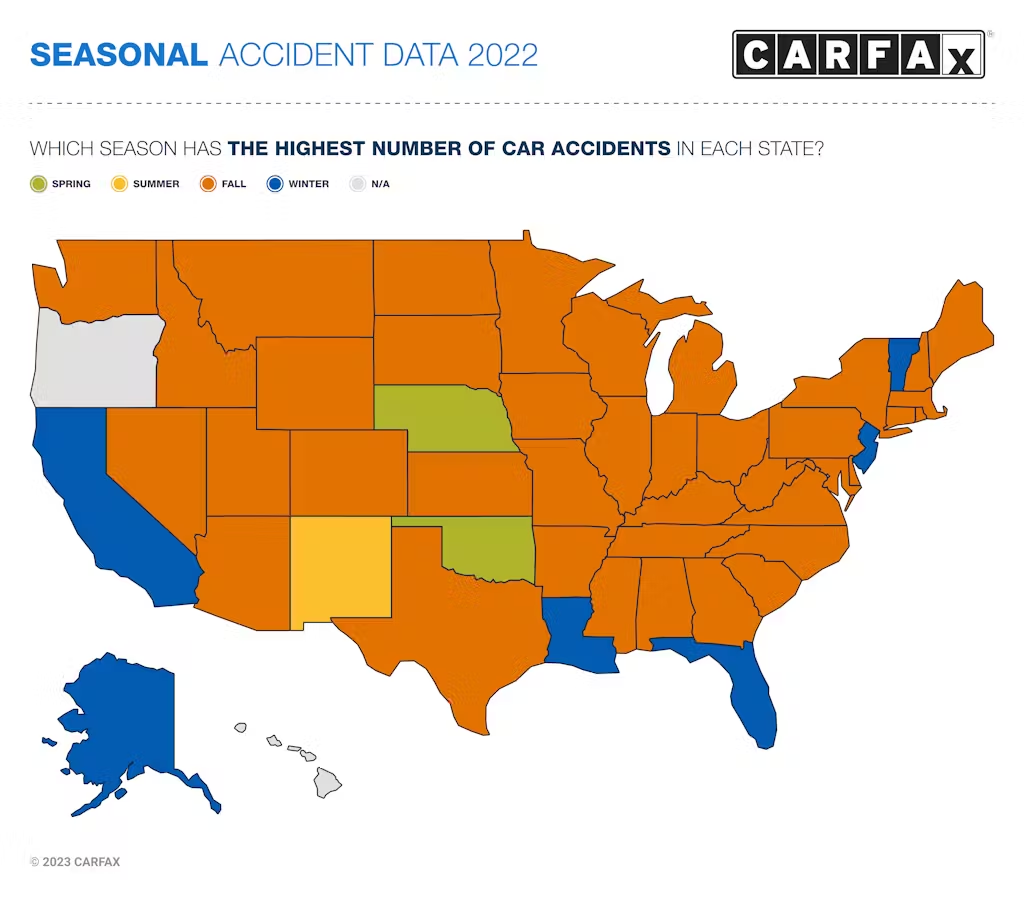
That time of the year is almost here — September 22, the first day of fall. With it comes cold temperatures, beautiful new foliage, and the potential risk of an unknowing driver.
While this may seem like a distant concern, it is important to recognize car accidents tend to increase in frequency during the later months of the year. According to CARFAX data, 72% of U.S. drivers live in areas where fall is the peak season for accidents to occur, with Georgia being one of those states.
THE TEMPERATURE IS DROPPING
- While the temperature is fluctuating, tire pressures will change rapidly. Low tire pressure increases the risk of blowout. While the weather cools, regularly check and adjust your tire pressure within its recommended range. Here is a guide on tire maintenance by the NHTSA.
- Defrosting is important. Ensure that your windshield and roof are clear of frost to prevent any visibility impairment while you drive.
- Be weary of slippery roads. Fall brings heavy morning dew which can cause slick roads and in turn, can significantly decrease traction. Cold shadows are also part of this issue, as many roads can appear dry, shaded areas are much cooler, and can be unexpectedly slippery.
THE SUN IS SETTING SOONER
- It is important to ensure your headlights are properly working with lessened daylight. Remember to turn them on even if it is still light out, this helps make sure you are visible to other drivers.
- With the sun setting by the time most of us are getting off work and doing our afternoon errands, the glare will be in our direct line of vision. It is important to keep a pair of sunglasses on hand and utilize your visor.
WILDLIFE AND ITS HABITATS ARE CHANGING
- Wet leaves are a common issue on roads during the fall season, while it may not appear that way on the surface level, leaves harbor humidity and can be a slippery danger to drive over.
- Fall is deer mating season, which means there will be a surge in sightings of these animals. Be mindful when driving during the dawn or dusk when deer are the most prominent on roads.
- Cool dewy mornings also result in large patches of fog. Remember to slow down and avoid using your high beams if you encounter a foggy area.
FREQUENTLY ASKED QUESTIONS
Q1: What time of day is the most dangerous to drive in the fall?
Answer: Dawn and dusk are the most dangerous due to reduced visibility, increased wildlife activity, and the angle of the sun.
Q2: Do I need winter tires for driving in the fall?
Answer: Winter tires are generally meant for temperatures that consistently drop below 46°F (7°C). If fall weather in your area meets this criterion, you may want to consider switching to winter tires earlier in the season.
Q3: How do I know if it is too foggy to drive?
Answer: If visibility is reduced to less than 100 feet (30 meters) and you cannot see other vehicles or road signs clearly, it is possibly too foggy to drive safely. It is best practice to pull over to a safe area and wait for it to clear.
We hope that everyone has an enjoyable fall season, and remembers to practice defensive driving for these changing weather seasons. Jones & Swanson is dedicated to making sure we spread awareness for safe and proactive driving throughout our communities.
IF YOU OR SOMEONE YOU KNOW HAS BEEN IN A CAR ACCIDENT, SEEK IMMEDIATE MEDICAL ASSISTANCE AND THEN GIVE US A CALL AT (770) 427-5498 OR CONTACT US ON AWJLAW.COM FOR A FREE CONSULTATION TO FIND OUT THE NEXT STEPS YOU MAY WANT TO TAKE.
Categories: Car Accident, Safety Tips





